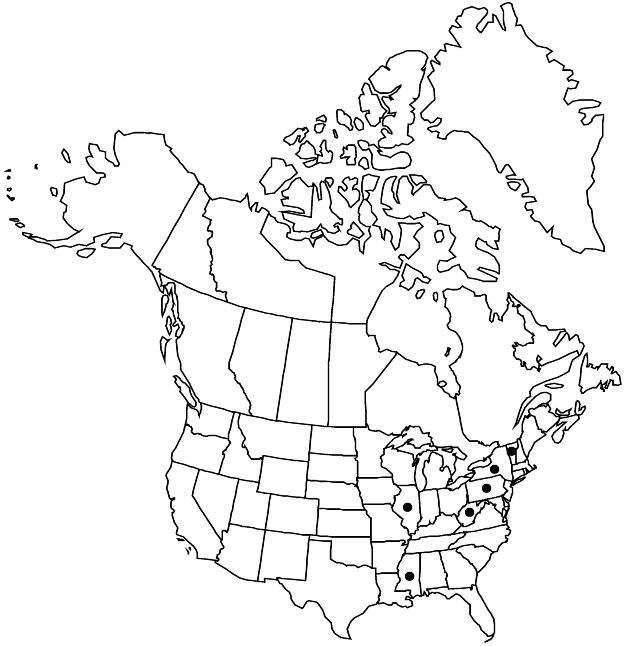Chaenomeles japonica
Hist. Nat. Vég. 2: 159. 1834.
Shrubs, 0.2–10 dm. Branches purple, scabrous (and tomentose when young, becoming blackish brown, verrucose, glabrous with age). Leaves: stipules of vegetative branches reniform, to 1 cm, margins crenate-serrate, apex usually obtuse; petiole 4–6 mm; blade obovate, spatulate, or broadly ovate, 3–5 × 2–3 cm, base cuneate to broadly cuneate, margins crenate-serrate, apex obtuse to acute, abaxial surface glabrous. Flowers 25–40 mm diam.; sepals ovate, rarely suborbiculate, 4–5 mm; petals dark red, obovate or suborbiculate, 15–25 mm; stamens 40–60, 1/2 length of petals. Pomes yellow, subglobose, 23–40 mm diam.
Phenology: Flowering Apr–May; fruiting Aug–Oct.
Habitat: Vacant lots, old fields, fencerows, wastelands
Elevation: 10–600 m
Distribution

Ill., Miss., N.Y., Pa., Vt., W.Va., e Asia (Japan), introduced also in Europe.
Discussion
Chaenomeles japonica is cultivated as an ornamental for its showy spring flowers.
Selected References
None.